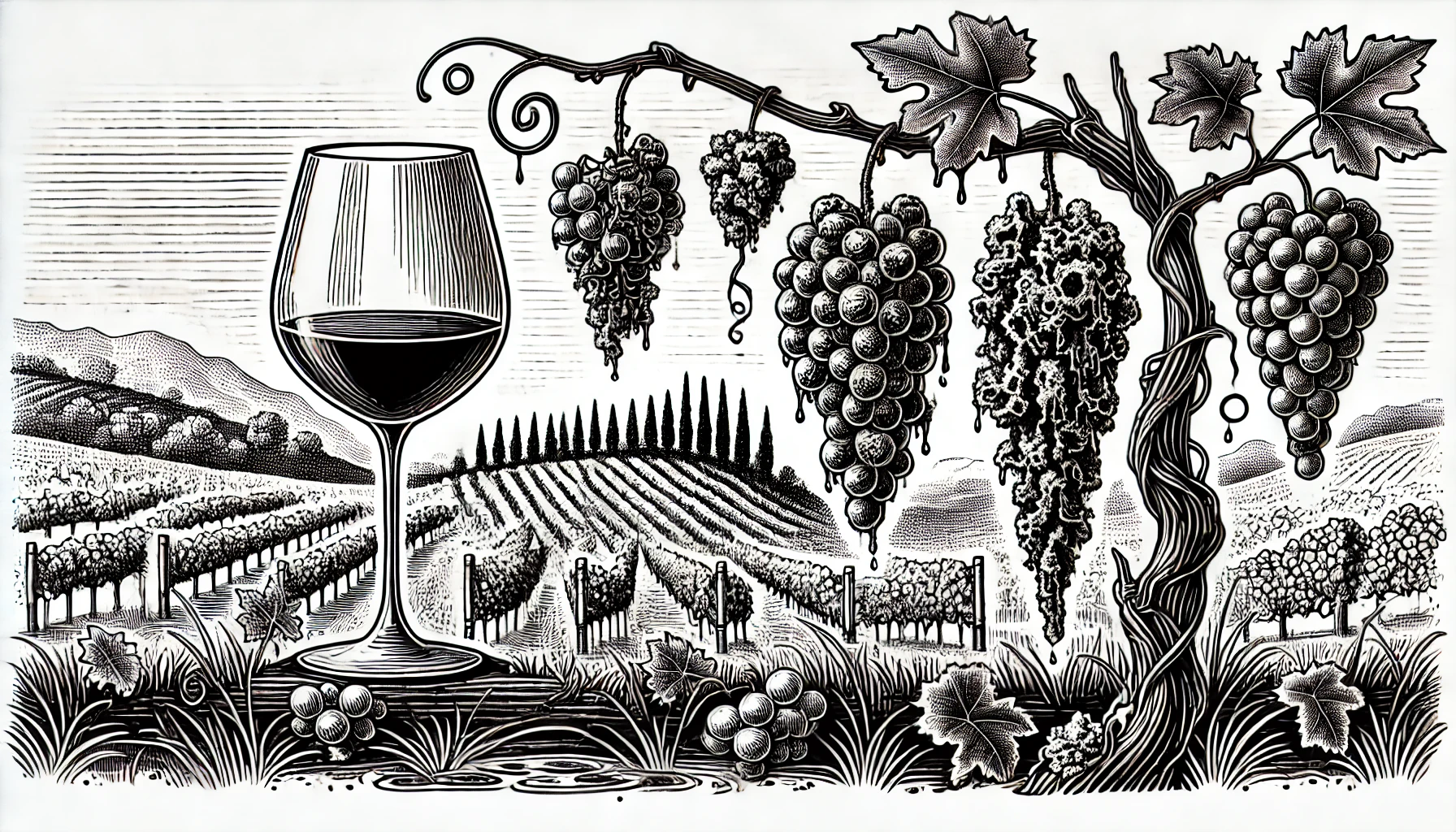
Botrytis, often referred to as noble rot, is a type of fungus (Botrytis cinerea) that can affect grapes in both beneficial and harmful ways. In the world of winemaking, Botrytis is highly valued when it occurs under the right conditions, contributing to the production of some of the most revered sweet wines in the world, such as Sauternes from Bordeaux or Tokaji from Hungary.
When Botrytis infects grapes in a specific way, it causes them to shrivel, concentrating their sugars and flavors. This process transforms the grapes into small, raisin-like fruits, leading to wines with intense sweetness, rich complexity, and honeyed, apricot, and marmalade-like flavors. This form of the fungus is known as noble rot, and wines made from Botrytis-affected grapes often have a deep golden color and an exceptional balance of sweetness and acidity.
However, if the environmental conditions are not favorable (too much humidity or rain, for example), Botrytis can instead lead to grey rot, which is detrimental to the grapes and can ruin an entire harvest. Grey rot causes grapes to rot in an uncontrolled manner, leading to off flavors and spoiled wines.
Noble Rot
Noble rot thrives in vineyards where cool misty mornings are followed by warm, sunny afternoons. The moisture encourages the growth of the fungus, while the sun helps to slowly dehydrate the grapes, concentrating their natural sugars. The resulting wines are highly sought after, not only for their intense sweetness but for their remarkable ability to age, often improving in complexity over decades.
Botrytis wines are typically served as dessert wines, enjoyed on their own or paired with foods like blue cheese, foie gras, or rich desserts.
Curious about more wine terms and insights? Visit our Wine Wiki section and explore the basic wine terms for expert definitions and tips!